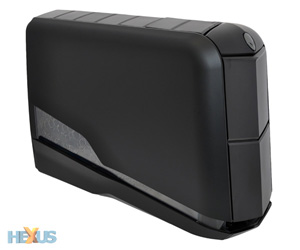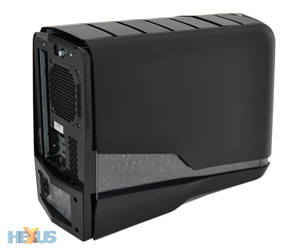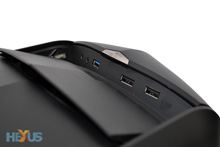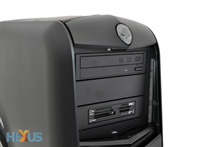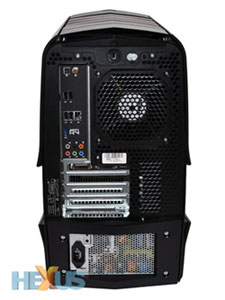Introduction
Dell's Alienware PCs have historically divided opinions, and perhaps they always will. For many a PC gamer, Alienware rigs are eye-catching, powerful machines that cost a pretty penny, but for those who're well versed in self-building, they can be seen as overpriced and underpowered.
Both arguments have merit, and they can both be applied to one of Dell's latest creations; the Alienware Aurora R4. Introduced as a fourth-generation upgrade to the long-standing Aurora line, the new machine may look familiar, but it's under the hood that a lot of the new magic takes place. Whereas the previous-generation Aurora revolved around Intel's P67 Sandy Bridge chipset, the new R4 moves up a notch to X79 - more commonly known as Sandy Bridge Extreme.
Prices start from £1,499 for the base unit alone, and while that includes a liquid-cooled hexa-core Intel Core i7-3930K processor pre-overclocked to 3.9GHz, it'll only get you a comparatively-weak Radeon HD 6870 graphics card. Add more graphics power - say a Radeon HD 6950 or an NVIDIA GeForce GTX 580 - and you'll soon find your build costing nearer the £2,000 mark.
And there's scope well beyond that, too. Our complete review sample came equipped with the same Intel chip overclocked a touch further to 4.1GHz, 8GB of memory, a GeForce GTX 580 graphics card, a 256GB Samsung SSD (in addition to a 1TB hard disk), integrated Wi-Fi and Bluetooth, a multi-card reader, 23in Alienware AW2310 3D monitor and an Alienware keyboard and mouse. Total cost for said build? A lofty £3,000.
It's a mega-money configuration, but one that isn't without a good deal of charm. The standard Aurora chassis really looks the business, but it's the £70 ALX upgrade that helps the Alienware system stand out from the crowd. For those who appreciate eye candy, the ALX configuration includes a series of fins across the top of the chassis that Dell describes as an "Active Venting" system. The vents open and close when you boot or shut down, and do so in sync with a sudden burst of internal fan speed. Entirely superfluous? Of course, but we'd be lying if we said the effect didn't manage to induce wry smiles throughout the office.
The futuristic design makes the Aurora feel like a living, breathing machine, and there are subtle touches throughout that serve to add to the appeal. The Alien head on the front? Give that a gentle touch and the top half of the chassis' front face slides down on satisfyingly-smooth rails. Even the top vents have hidden functions. While the central blades are automated for effect, the front vent slides back to reveal an I/O panel that provides two USB 2.0 ports, a USB 3.0 port and a pair of audio jacks, and by lifting the vent furthest back, you release a side panel for easy access to the system's innards. The rearmost vent can be locked to prevent accidental openings, and here's the clever bit; the ALX chassis is fitted with battery-powered internal lighting that automatically activates when the side panel comes off.
Of course, on top of all that, there's also the customary AlienFX Lighting which consists of eight lighting zones that allow you to customise the chassis to your taste. There's an abundant number of colour combinations to choose from - as well as a selection of transition or strobe effects - and it's all easily managed by Dell's Command Center software suite. Illuminated PC chassis can come across as tacky, but that isn't the case here - we've seen some impressive-looking builds in recent years, but the Aurora R4, with its Active Venting system, is probably the pick of the bunch.
There's a lot to like in terms of exterior appeal, and what's arguably most impressive is that Dell crams all these features into a mid-tower frame that measures 426mm x 645mm x 250mm. It's by no means small, and a weight of at least 20kg cancels out any LAN-going aspirations, but the Aurora R4 is comfortably shorter than many other high-end gaming PCs on the market today.
Dell states that this is "without a doubt, the most advanced Alienware desktop to date," but can the internal components live up to the expectations set by the lush exterior?






